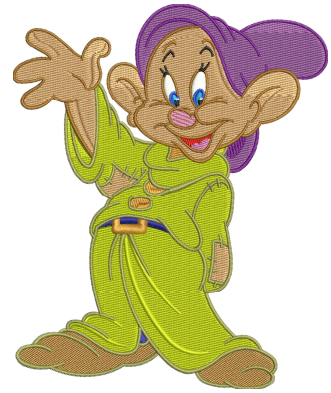Unraveling the Mysteries of Digitizing for Embroidery

Intro
Embroidery has for some time been an art respected for its excellence and unpredictability. With the appearance of innovation, digitizing for embroidery has reformed the way this artistic expression is drawn closer, making it conceivable to make more complicated and point by point designs with accuracy and proficiency. In any case, the most common way of digitizing for embroidery can appear to be a mind-boggling puzzle to a large number. This blog entry intends to demystify the cycle, revealing insight into the basic parts of digitizing and how it has changed the embroidery business.
Understanding the Basics of Digitizing for Embroidery
At its center, digitizing for embroidery is tied in with changing work of art into a design that embroidery machines can decipher and fasten onto texture. This change is accomplished through digitizing programming, which empowers the production of a computerized fasten map. An effective digitizer needs capability in exploring this product as well as a thorough comprehension of different embroidery methods. This information is fundamental for going with informed choices online types, their arrangement, and thickness all through the design. By carefully outlining these components, the digitizer guarantees that the embroidery machine can precisely repeat the first craftsmanship on texture, safeguarding the designs detail and tasteful. This interaction is a mix of workmanship and innovation, requiring a sharp eye for detail and a profound appreciation for the specialty of embroidery.
The Critical Role of Software in Digitizing
The selection of digitizing software is a pivotal decision in the embroidery digitizing process, acting as the bridge between creative vision and embroidered reality. The market offers a spectrum of software options tailored to various skill levels, from user-friendly platforms for novices to sophisticated systems loaded with professional-grade features. These tools are instrumental in allowing digitizers to precisely outline designs, adjust stitch parameters, and sequence the embroidery execution. The capabilities of the software chosen can dramatically influence the fidelity of the final embroidered piece to the original design, underscoring its importance. With the right software, digitizers can push the boundaries of embroidery, bringing intricate and nuanced designs to life with unparalleled accuracy.
From Art to Embroidery: The Digitizing Process
The journey from a concept to a fully embroidered piece begins when a design is chosen for transformation. This design undergoes conversion into a stitch file using digitizing software, a step that translates the visual art into machine-readable instructions. The digitizer meticulously outlines the design, selecting appropriate stitch types, directions, and densities that will best realize the artwork on fabric. Key to this process is a deep understanding of how different fabrics interact with various stitches, influencing decisions to ensure the embroidered outcome is faithful to the original design. Adjustments may be made to accommodate the unique characteristics of the fabric, ensuring the integrity of the design is maintained once transferred. This careful planning and execution stage is critical in bridging the gap between digital art and tangible embroidery, setting the stage for the embroidery machine to bring the digitized vision to life.
Tips and Tricks for Effective Digitizing
Navigating the complexities of digitizing for embroidery can be streamlined with a few strategic practices. A foundational step involves working with a high-resolution image of the intended design, as this ensures the finest details are not lost in translation. Knowledge of fabric behavior is crucial; for instance, dense stitches may weigh down lighter fabrics, causing distortion. Experimentation plays a key role—trial with various stitch types and their densities can unveil the perfect combination for achieving the desired effect on the final piece. Simplification of the design can sometimes enhance its elegance, making it crucial to balance intricacy with practicality. Additionally, keeping an organized layering sequence in the digitizing software can prevent needle path issues, making the embroidery process smoother and more efficient. Embracing these strategies can significantly improve the quality and execution of digitized embroidery projects.
The Impact of Digitizing on the Embroidery Industry
Digitizing has altered the embroidery business by working with fast creation and widening the skylines of design intricacy and customization. This progression has made it attainable to put up intricate and nuanced designs for sale to the public quicker than any time in recent memory, changing how organizations, specialists, and fashioners approach embroidery projects. The capacity to productively deliver superior grades, definite work for a huge scope has smoothed out tasks as well as extended innovative conceivable outcomes. Digitizing has empowered the production of designs that intently reflect the nature of hand embroidery, integrating an amazing cluster of varieties and surfaces. This mechanical jump has expanded the business’ range, opening new roads for development and joint effort across different areas, consequently enhancing the embroidery scene with a combination of custom and state of the art innovation.
Conclusion
Leaving on the excursion of digitizing for embroidery opens an existence where inventiveness meets accuracy, changing conventional embroidery into a dynamic and flexible work of art. The complexities of digitizing, from grasping the product’s critical job to excelling at join choice and texture thought, address a mix of expertise and development that moves the specialty into new domains. As we’ve investigated, powerful digitizing practices can essentially improve the quality and execution of embroidery projects, making it a significant expertise in the present carefully determined industry. By embracing the headways and methodologies examined, the two amateurs and old pros can add to the development of embroidery, guaranteeing this well-established make keeps on flourishing in the cutting-edge time. In this light, digitizing isn’t simply a specialized cycle however an extension associating the rich legacy of embroidery with the boundless conceivable outcomes of computerized imagination.


















